 W
WRobert Ardrey was an American playwright, screenwriter and science writer perhaps best known for The Territorial Imperative (1966). After a Broadway and Hollywood career, he returned to his academic training in anthropology and the behavioral sciences in the 1950s.
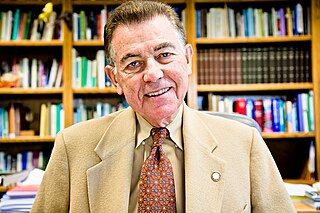 W
WFrancisco José Ayala Pereda is a Spanish-American evolutionary biologist and philosopher who was a longtime faculty member at the University of California, Irvine and University of California, Davis. He is a former Dominican priest, ordained in 1960, but left the priesthood that same year. After graduating from the University of Salamanca, he moved to the United States in 1961 to study for a PhD at Columbia University. There, he studied for his doctorate under Theodosius Dobzhansky, graduating in 1964. He became a US citizen in 1971.
 W
WWilliam H. Calvin is an American theoretical neurophysiologist and professor at the University of Washington in Seattle. He is known for popularizing neuroscience and evolutionary biology, including the hybrid of those two fields, neural Darwinism. He relates abrupt climate change to human evolution and more recently has been working on global climate change issues.
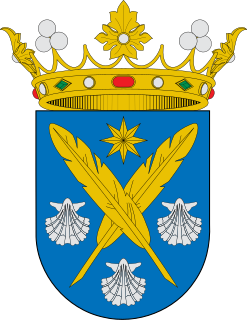 W
WCamilo José Arcadio Cela Conde, 2nd Marquess of Iria Flavia, is a Spanish writer. He is the son of Nobel Prize winning writer Camilo José Cela and is currently a Professor of Philosophy of law, Morality and Politics at the University of the Balearic Islands.
 W
WRaymond Arthur Dart was an Australian anatomist and anthropologist, best known for his involvement in the 1924 discovery of the first fossil ever found of Australopithecus africanus, an extinct hominin closely related to humans, at Taung in the North of South Africa in the province Northwest.
 W
WCharles Robert Darwin was an English naturalist, geologist and biologist, best known for his contributions to the science of evolution. His proposition that all species of life have descended from common ancestors is now widely accepted and considered a fundamental concept in science. In a joint publication with Alfred Russel Wallace, he introduced his scientific theory that this branching pattern of evolution resulted from a process that he called natural selection, in which the struggle for existence has a similar effect to the artificial selection involved in selective breeding. Darwin has been described as one of the most influential figures in human history, and he was honoured by burial in Westminster Abbey.
 W
WTerrence William Deacon is an American neuroanthropologist. He taught at Harvard for eight years, relocated to Boston University in 1992, and is currently Professor of Anthropology and member of the Cognitive Science Faculty at the University of California, Berkeley.
 W
WJared Mason Diamond is an American geographer, historian, ornithologist, and author best known for his popular science books The Third Chimpanzee (1991); Guns, Germs, and Steel ; Collapse (2005), The World Until Yesterday (2012), and Upheaval (2019). Originally trained in biochemistry and physiology, Diamond is known for drawing from a variety of fields, including anthropology, ecology, geography, and evolutionary biology. He is a professor of geography at UCLA.
 W
WRobin Ian MacDonald Dunbar is a British anthropologist and evolutionary psychologist and a specialist in primate behaviour. He is currently head of the Social and Evolutionary Neuroscience Research Group in the Department of Experimental Psychology at the University of Oxford. He is best known for formulating Dunbar's number, a measurement of the "cognitive limit to the number of individuals with whom any one person can maintain stable relationships".
 W
WRobert Andrew Foley, FBA is a British anthropologist, archaeologist, and academic, specialising in human evolution. From 1977 to 1985, he was a lecturer in anthropology at the University of Durham. He has been a fellow of King's College, Cambridge since 1987, and Leverhulme Professor of Human Evolution at the University of Cambridge since 2003.
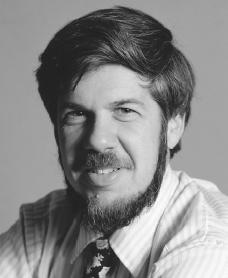 W
WStephen Jay Gould was an American paleontologist, evolutionary biologist, and historian of science. He was one of the most influential and widely read authors of popular science of his generation. Gould spent most of his career teaching at Harvard University and working at the American Museum of Natural History in New York. In 1996, Gould was hired as the Vincent Astor Visiting Research Professor of Biology at New York University, after which he divided his time teaching between there and Harvard.
 W
WThis article is about the Dutch geneticist. For the cultural historian see Johan Huizinga.
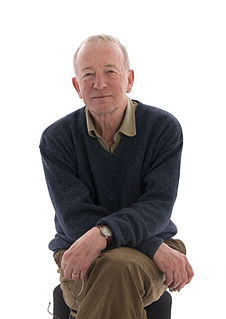 W
WNicholas Keynes Humphrey is an English neuropsychologist based in Cambridge, who is known for his work on the evolution of primate intelligence and consciousness. His interests are wide-ranging. He studied mountain gorillas with Dian Fossey in Rwanda, he was the first to demonstrate the existence of "blindsight" after brain damage in monkeys, he proposed the celebrated theory of the "social function of intellect" and he is the only scientist ever to edit the literary journal Granta.
 W
WGlynn Llywelyn Isaac was a South African archaeologist who specialised in the very early prehistory of Africa, and was one of twin sons born to botanists William Edwyn Isaac and Frances Margaret Leighton. He has been called the most influential Africanist of the last half century, and his papers on human movement and behavior are still cited in studies a quarter of a century later.
 W
WDonald Carl Johanson is an American paleoanthropologist. He is known for discovering, with Yves Coppens and Maurice Taieb, the fossil of a female hominin australopithecine known as "Lucy" in the Afar Triangle region of Hadar, Ethiopia.
 W
WSir Arthur Keith FRS FRAI was a British anatomist and anthropologist, and a proponent of scientific racism. He was a fellow and later the Hunterian Professor and conservator of the Hunterian Museum of the Royal College of Surgeons of England. He was a strong proponent of Piltdown Man, but finally conceded to be a forgery shortly before his death.
 W
WChris Knight is a British anthropologist and political activist.
 W
WProf. Dr. Adriaan Kortlandt was a Dutch ethologist.
 W
WJeffrey Todd Laitman, Ph.D. is an American anatomist and physical anthropologist whose science has combined experimental, comparative, and paleontological studies to understand the development and evolution of the human upper respiratory and vocal tract regions. He is Distinguished Professor of the Icahn School of Medicine at Mount Sinai in New York City where he holds other positions, including: Professor and Director of the Center for Anatomy and Functional Morphology, Professor of Otolaryngology and Professor of Medical Education.
 W
WRichard Erskine Frere Leakey FRS is a Kenyan palaeoanthropologist, conservationist and politician. Leakey has held a number of official positions in Kenya, mostly in institutions of archaeology and wildlife conservation. He has been Director of the National Museum of Kenya, founded the NGO WildlifeDirect and is the chairman of the Kenya Wildlife Service.
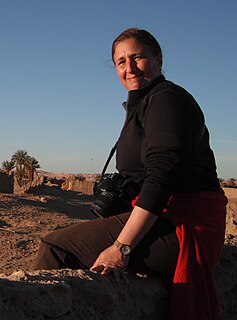 W
WDr. Marta Mirazón Lahr is a palaeoanthropologist and Director of the Duckworth Laboratory at the University of Cambridge.
 W
WElaine Morgan OBE, FRSL, was a Welsh writer for television and the author of several books on evolutionary anthropology, especially the aquatic ape hypothesis, which she advocated as a corrective to what she saw as theories that purveyed gendered stereotypes and so failed to take adequate account of women's role in human evolution. The Descent of Woman, published in 1972, became an international bestseller, translated into ten languages. In 2016, she was named as one of "the 50 greatest Welsh men and women of all time" in a press survey.
 W
WDesmond John Morris FLS hon. caus. is an English zoologist, ethologist and surrealist painter, as well as a popular author in human sociobiology. He is known for his 1967 book The Naked Ape, and for his television programmes such as Zoo Time.
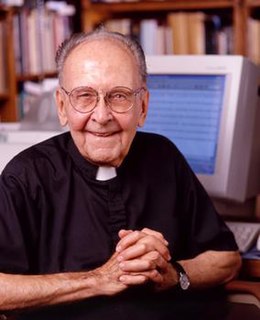 W
WWalter Jackson Ong was an American Jesuit priest, professor of English literature, cultural and religious historian, and philosopher. His major interest was in exploring how the transition from orality to literacy influenced culture and changed human consciousness. In 1978 he served as elected president of the Modern Language Association.
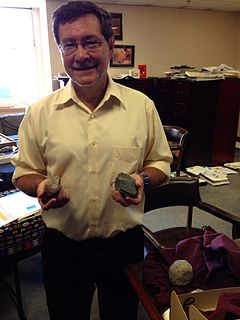 W
WRichard B. Potts is a paleoanthropologist and has been the director of the Smithsonian Institution Museum of Natural History's Human Origins Program since 1985. He is the curator of the David H. Koch Hall of Human Origins at the Smithsonian.
 W
WMatthew White Ridley, 5th Viscount Ridley,, is a British journalist and businessman. He is best known for his writings on science, the environment, and economics. He has written several science books, including The Red Queen: Sex and the Evolution of Human Nature (1994), Genome (1999), The Rational Optimist: How Prosperity Evolves (2010) and The Evolution of Everything: How Ideas Emerge (2015). He publishes a blog and has been a regular contributor to The Times newspaper.
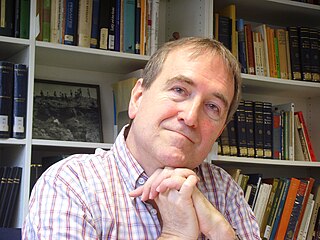 W
WChristopher Brian Stringer is a British physical anthropologist noted for his work on human evolution.
 W
WIan Tattersall is a British-born American paleoanthropologist and a curator emeritus with the American Museum of Natural History in New York City, New York. In addition to human evolution, Tattersall has worked extensively with lemurs. Tattersall is currently working with the Templeton Foundation.
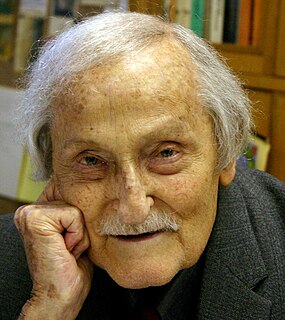 W
WPhillip Vallentine Tobias was a South African palaeoanthropologist and Professor Emeritus at the University of the Witwatersrand in Johannesburg. He was best known for his work at South Africa's hominid fossil sites. He was also an activist for the eradication of apartheid and gave numerous anti-apartheid speeches at protest rallies and also to academic audiences.
 W
WNicholas Patrick Toth is an American archaeologist and paleoanthropologist. He is a Professor in the Cognitive Science Program at Indiana University and is a founder and co-director of the Stone Age Institute. Toth's archaeological and experimental research has focused on the stone tool technology of Early Stone Age hominins who produced Oldowan and Acheulean artifacts which have been discovered across Africa, Asia, the Middle East, and Europe. He is best known for his experimental work, with Kathy Schick, including their work with the bonobo Kanzi who they taught to make and use simple stone tools similar to those made by our Early Stone Age ancestors.
 W
WGerard M. Verschuuren is a human biologist, writer, speaker, and consultant, working at the interface of science, philosophy, and religion. He is a human biologist, specialized in human genetics, who also earned a doctorate in the philosophy of science, and studied and worked at universities in Europe and the United States. In 1994, he moved permanently to the United States, and lives now in the southern part of New Hampshire.
 W
WFranciscus Bernardus Maria "Frans" de Waal is a Dutch primatologist and ethologist. He is the Charles Howard Candler Professor of Primate Behavior in the Department of Psychology at Emory University in Atlanta, Georgia, director of the Living Links Center at the Yerkes National Primate Research Center at Emory, and author of numerous books including Chimpanzee Politics (1982) and Our Inner Ape (2005). His research centers on primate social behavior, including conflict resolution, cooperation, inequity aversion, and food-sharing. He is a member of the United States National Academy of Sciences and the Royal Netherlands Academy of Arts and Sciences.
 W
WAlan Cyril Walker was the Evan Pugh Professor of Biological Anthropology and Biology at the Pennsylvania State University and a research scientist for the National Museum of Kenya.
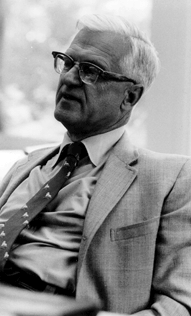 W
WSherwood Larned Washburn, nicknamed "Sherry", was an American physical anthropologist, and "a legend in the field." He was pioneer in the field of primatology, opening it to the study of primates in their natural habitats. His research and influence in the comparative analysis of primate behaviors to theories of human origins established a new course of study within the field of human evolution. He changed the field of anthropology forever and for the better with the publication of his paper The New Physical Anthropology, in 1951, in which he argued, convincingly, that human variation was continuous, and could not be broken up into discontinuous races.
 W
WTim D. White is an American paleoanthropologist and Professor of Integrative Biology at the University of California, Berkeley. He is best known for leading the team which discovered Ardi, the type specimen of Ardipithecus ramidus, a 4.4 million-year-old likely human ancestor. Prior to that discovery, his early career was notable for his work on Lucy as Australopithecus afarensis with discoverer Donald Johanson.
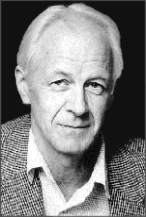 W
WAllan Charles Wilson was a Professor of Biochemistry at the University of California, Berkeley, a pioneer in the use of molecular approaches to understand evolutionary change and reconstruct phylogenies, and a revolutionary contributor to the study of human evolution. He was one of the most controversial figures in post-war biology; his work attracted a great deal of attention both from within and outside the academic world. He is the only New Zealander to have won the MacArthur Fellowship.
 W
WEdward Osborne Wilson, usually cited as E. O. Wilson, is an American biologist, naturalist, and writer. Wilson is an influential biologist who on numerous occasions has been given the nicknames "The New Darwin", "Darwin's natural heir" or "The Darwin of the 21st century". His biological specialty is myrmecology, the study of ants, on which he has been called the world's leading expert.
 W
WRichard Walter Wrangham is an English anthropologist and primatologist. His research and writing have involved ape behavior, human evolution, violence, and cooking.